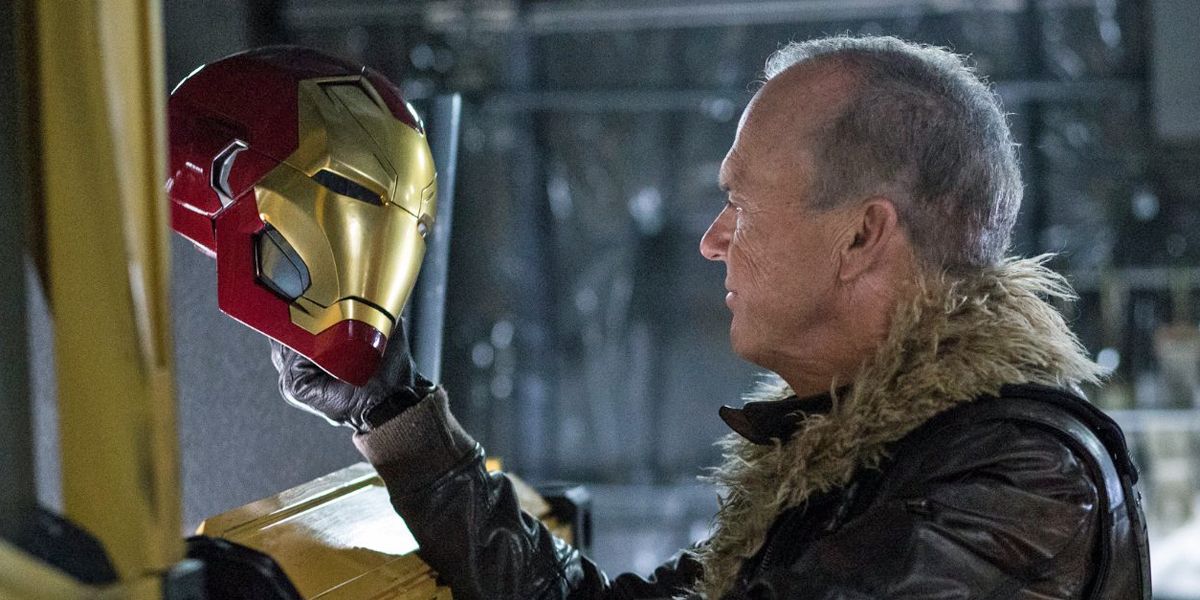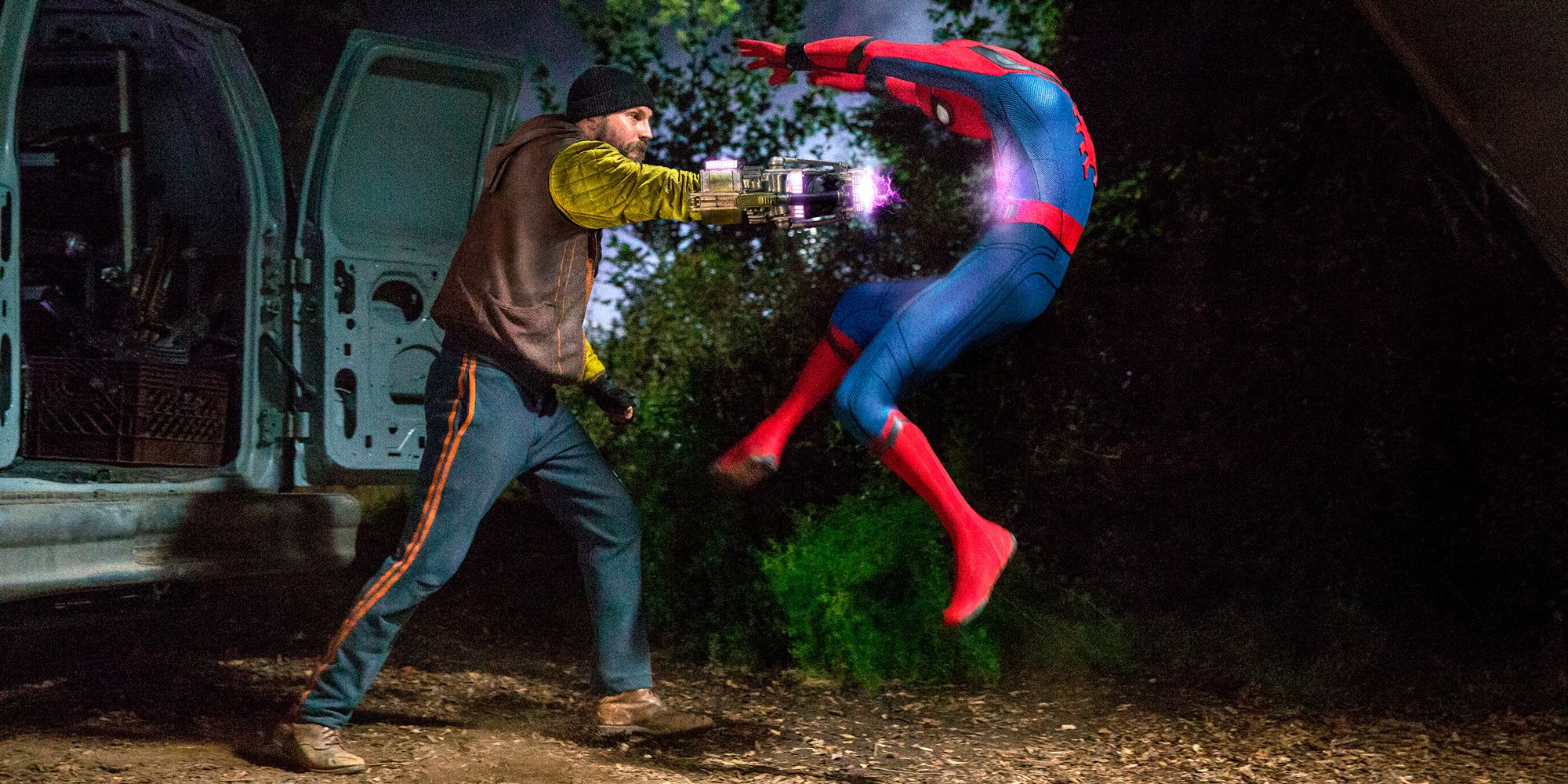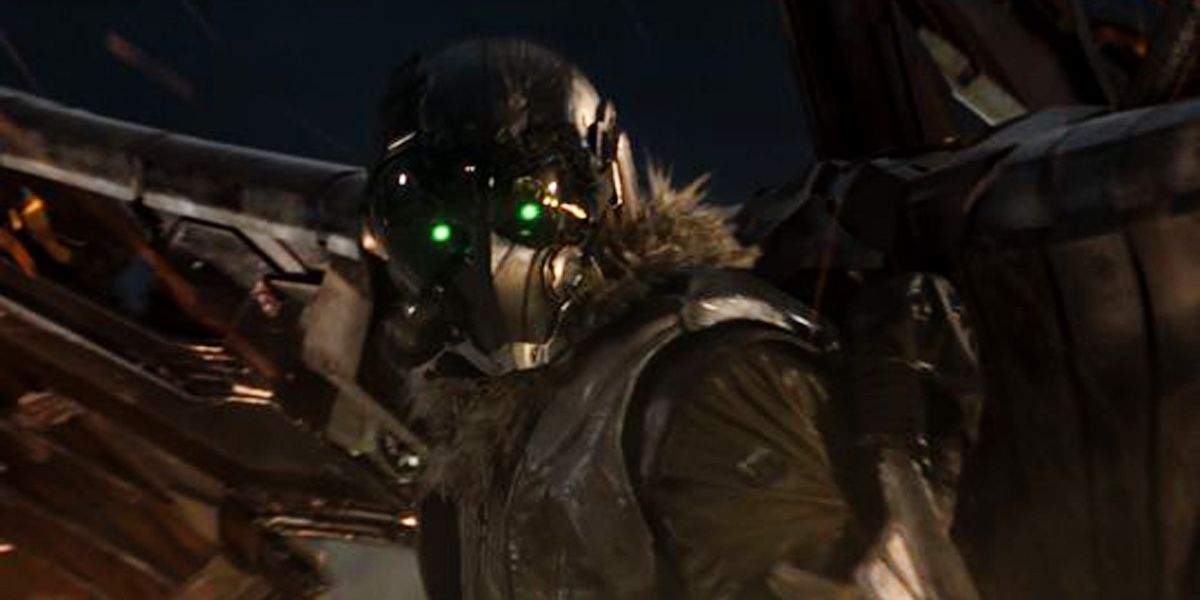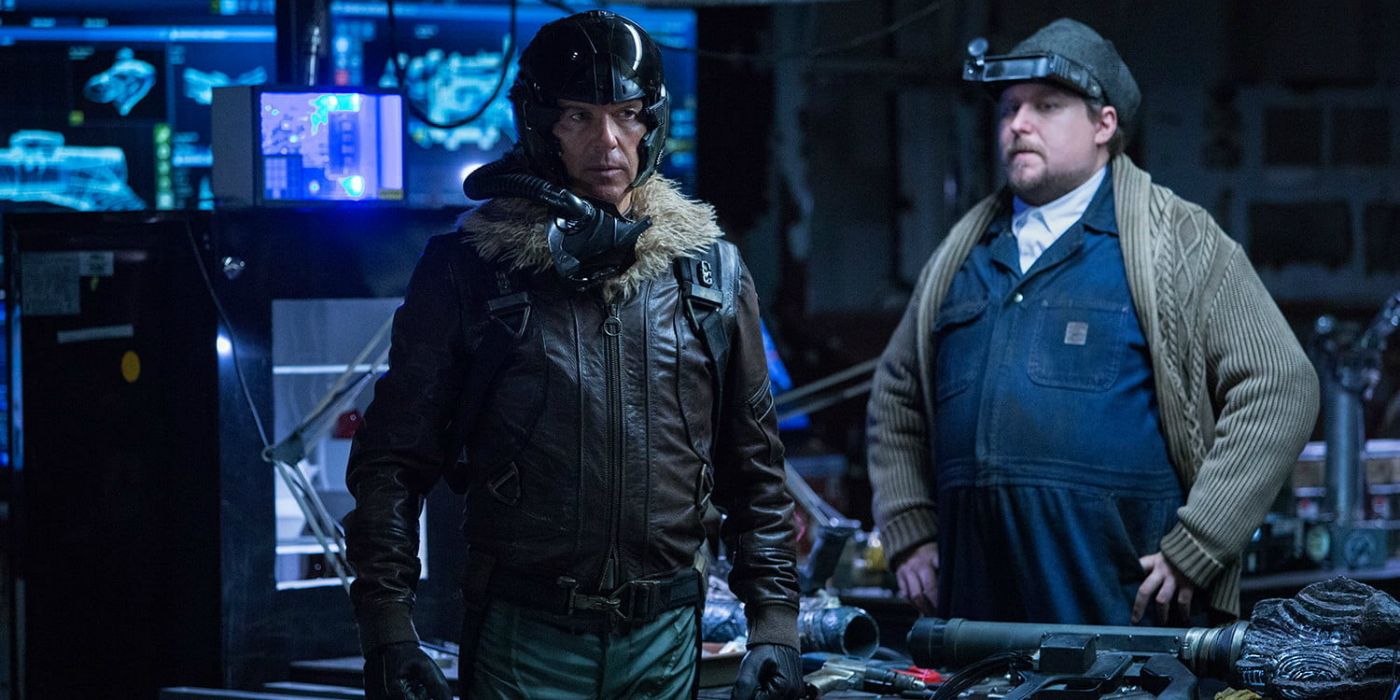WARNING: This article contains spoilers for Spider-Man: Homecoming, in theaters now.
In superhero, and particularly Spider-Man, films, multiple villains can be cause for concern. While the costumed criminals are rarely victorious in the end, they can derail the plot. However, Spider-Man: Homecoming demonstrates how multiple foes can test the protagonist without testing the patience of the audience.
REVIEW: Spider-Man: Homecoming Is One of the MCU’s Best Yet
In the franchise reboot, Tom Holland's Spider-Man is challenged, primarily due to his inexperience, by several villains: the Vulture, a couple of incarnations of the Shocker, and others, including the Tinkerer, in a less-direct manner. Director Jon Watts used the antagonists smartly, which is a good sign for the franchise's future, as Spider-Man has one of the larger, and more colorful, rogues galleries in comics. Plus, Sony is already developing a Venom movie (rumored to include Carnage), with spinoffs featuring Mysterio and Kraven the Hunter thought to be in the works, which means other villains will have their moment in the spotlight.
But the manner in which Spider-Man: Homecoming overcomes the curse of too many villains needs to be analyzed, as chances are this formula will be required again, perhaps sooner rather than later. Here's how the film accomplishes the feat.
It Doesn't Force An Emotional Connection
In Homecoming, the villains are thugs. There isn't a big emotional connection to Spider-Man -- well, not at least until the end. In Sam Raimi's first two films, Norman Osborn and Otto Octavius were mentors and father figures to Peter Parker, while the third retconned Sandman as Uncle Ben's murder. We also saw Peter's best friend, Harry Osborn, turn on him, while Eddie Brock's hatred led to his rampage as Venom. In Marc Webb's The Amazing Spider-Man and its sequel, there was a similar mentor arc with Curt Connors as the Lizard, and another repetitive betrayal with Harry as the Green Goblin. In other words, apart from Electro, everyone had a strong personal connection to the hero.
RELATED: What Villains Could Spider-Man Face in Homecoming Sequel?
Watts throws all of that out the window, for the most part, and it works wonders. There isn't a personal link in the feud with Vulture until the film's end, when Michael Keaton's character is revealed to be the father of Peter Parker's romantic interest, Liz Allan. The Vulture and Spider-Man figure out each other's secret identity, but by that time those revelations aren't driving the heated rivalry between them All it does is make things uncomfortable for Peter, and tick off Adrian Toomes even more that his plans are being scuppered by a pesky kid.
What this approach also does is allow Vulture and his goons the liberty to go about their criminal activities with two goals in mind: chaos and cash. Sound familiar? We saw it in The Dark Knight with Heath Ledger's Joker. Sometimes the rhyme behind the criminal's reason is that simple, and doesn't require deep layers. Vulture and Shocker simply had to take Spider-Man off the table so they could peddle their goods, and when it became personal, nothing really changed; it was still all about business. They bucked a big trope in superhero movies by not immediately going after Spider-Man's family, because truth be told, they didn't care about his identity.
There's A Gang You Can Sympathize With
The villains in Homecoming aren't part of a sprawling, (relatively) faceless organization like Hydra. Their actions don't revolve around a byzantine scheme hatched by the likes of Helmut Zemo. They're just a gang of crooks with a ringleader (Vulture), the brains (Tinkerer) and the brawn ( the Shocker). Their plan is simple: Scavenge discarded weaponry in the Marvel Cinematic Universe from battles with the Chitauri, Dark Elves and others, and re-engineer them for sale on the streets. Less is more sometimes, and in this case, the minimal backstory works just fine.
RELATED: Spider-Man: Homecoming Honors the Past By Moving Beyond It
What actually stands out is that viewers actually feel bad for the villains because of how Watts frames them in the opening scene. Toomes ran a clean-up crew that lost its contract as Damage Control swooped in and, as a worker puts it, The guys who create the mess get paid to clean it up." It feels like a sociopolitical jab at how corrupt the world is, which trickles down to affect the lower and middle classes, turning honest, hard-working people into fiends. This is a stark reflection of modern society, and Vulture's crew is simply going after what they belive is rightfully theirs.
They didn't choose the thug life; it chose them.
Spider-Man Doesn't Have To Fight All of Them
Spider-Man 3 tried way too hard to throw Sandman, Ninja-Goblin (Harry) and Venom at Peter, and he ended up fighting them all. That led to the pretty obvious twist of Harry redeeming himself, which by then you didn't care for because the story was such a cluster-fest. Webb's The Amazing Spider-Man 2 shockingly went the same route with Electro acting as the precursor to the big boss in Harry's Green Goblin, and Rhino, who was wedged in as a punching bag for Spidey.
Watts, however, is smart to note that our hero doesn't need to fight all the villains. The protagonists and antagonists, as seen with Luc Besson's The Fifth Element, don't even have to meet face to face for a successful story. Peter has to fight the Vulture, that's a given. But Toomes actually kills the first version of the Shocker (Jackson "Montana" Brice) so Herman Schultz can step in as an easier partner to work with. After that, it's just a one-two sucker punch to take out the friendly neighborhood wall-crawler.
RELATED: Spider-Man: Vulture’s Long, Awkward Flight to the Big Screen
That's a prime example of how Homecoming succeeds: It doesn't make every villain a priority. Mac Gargan is the ferry where the FBI plans to bust Vulture's illegal sales, and he's easily defeated and tossed in jail. He doesn't actually become important until the mid-credits scene, where he emerges with his scorpion neck tattoo, and tries to learn Spider-Man's identity from Toomes so he can pass the information along to friends. The redemption route is handled pretty well here because in their final battle Spider-Man saves Toomes' life, leading the villain to keep his secret.
What's also notable is that Tinkerer is still on the loose, so if Gargan ever gets out prison, he could power up to become the Scorpion. But in the meantime, Tinkerer remains free to build tech for other villains, maybe even finally giving Sony a legitimate means of bringing the Sinister Six to life. Aaron Davis (Donald Glover), aka the Ultimate Prowler and uncle of Miles Morales, also features as a criminal, but's used for an interrogation scene, not for a big battle, further emphasizing that villains are building blocks to the greater story. Not all of them need to be used as big pillars. The director and screenwriters cleverly construct antagonists both minor and major to drive the plot without compromising the integrity or importance of the villains -- or the hero.
In theaters now, Spider-Man: Homecoming stars Tom Holland, Michael Keaton, Zendaya, Donald Glover, Jacob Batalon, Laura Harrier, Tony Revolori, Tyne Daly, Bokeem Woodbine, Marisa Tomei and Robert Downey Jr.




